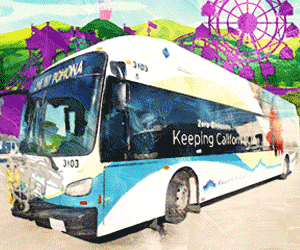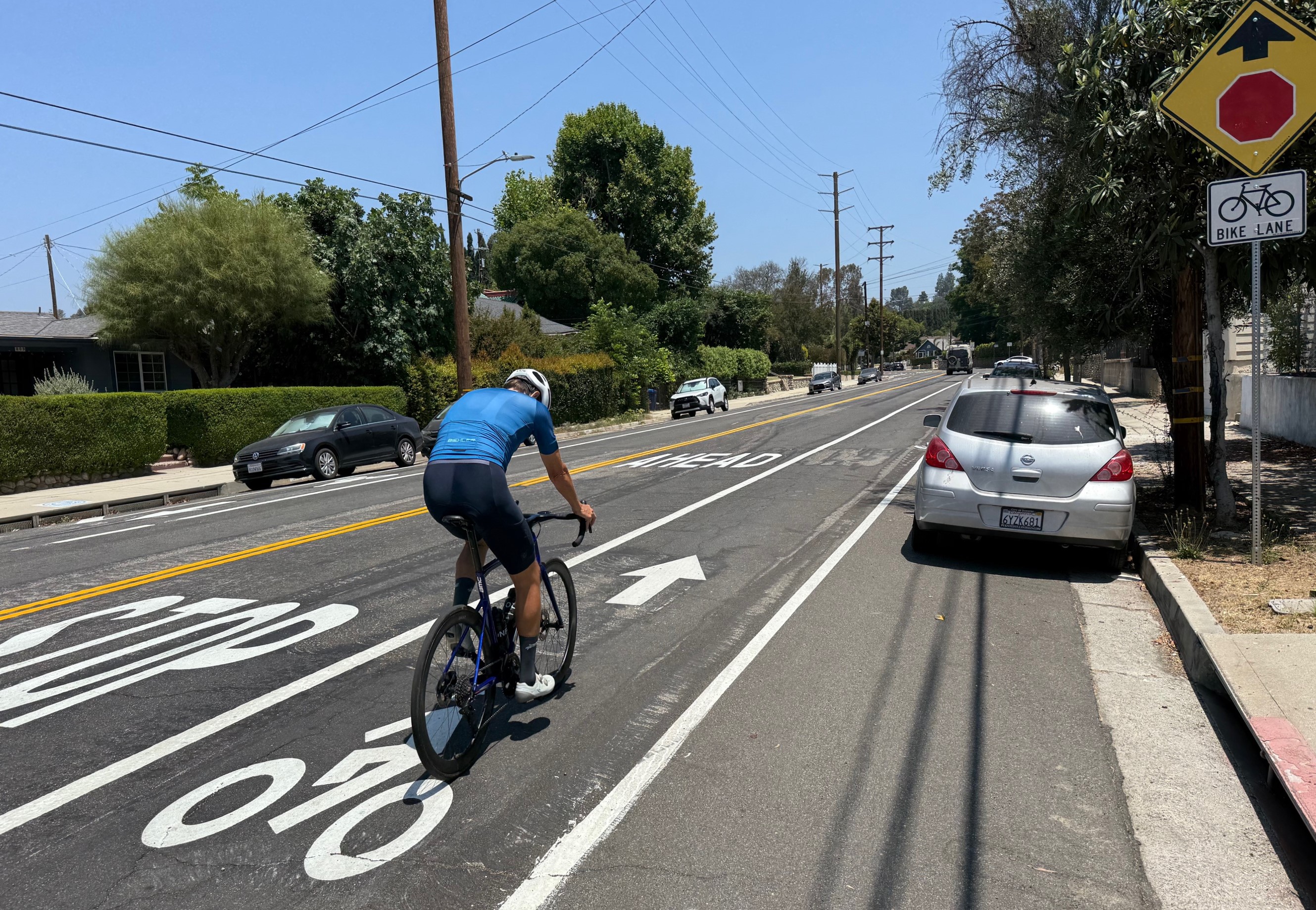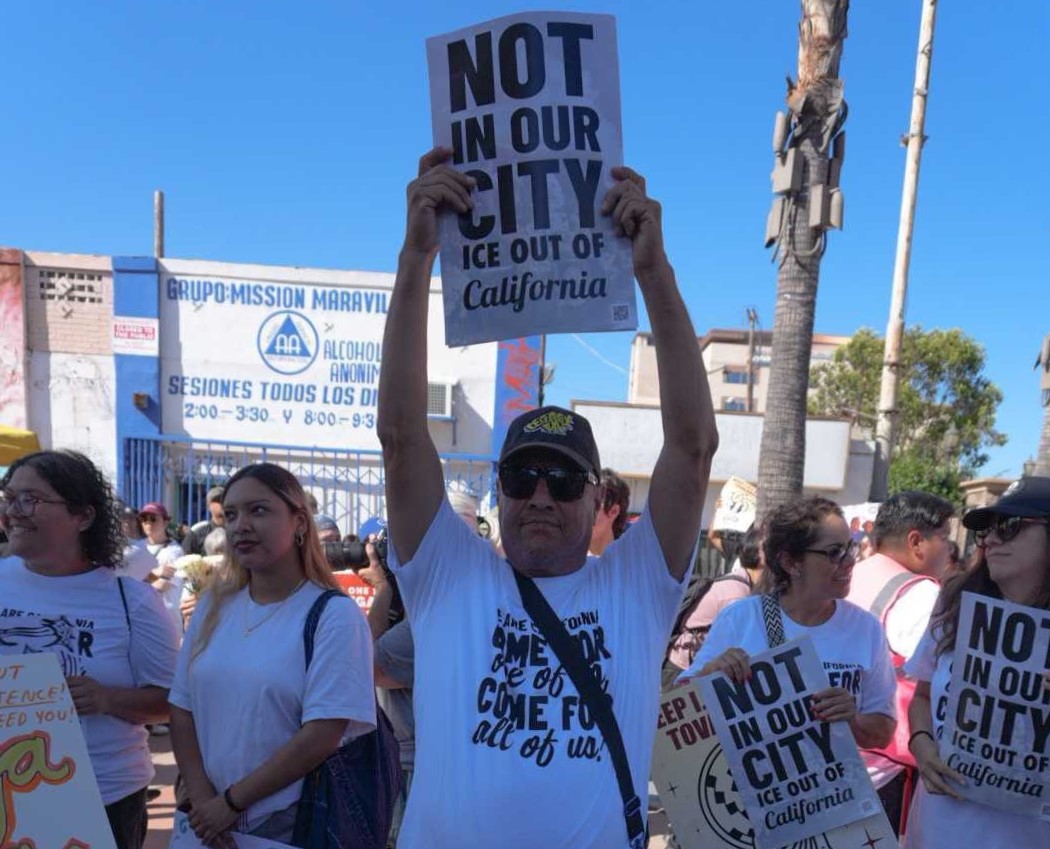California administrative rulemakers recently moved a step closer to
reforming the section of the California Environmental Quality Act
(CEQA) that has compelled cities to focus undue attention on the
age-old Automobile Level of Service (LOS) threshold for impacts of new
projects and has led to the construction of excess off-street parking.
 Photo: pbo31
Photo: pbo31The state's Natural Resources Agency released the newest revisions
of Appendix G of the CEQA guidelines (the Environmental Checklist Form)
late on Friday afternoon, setting off a flurry of emails from
proponents of LOS reform, including officials in San Francisco,
Oakland, and San Jose, as well as transit and bicycle advocates.
As documented at SF Streetsblog, over-reliance on LOS considerations by planners has traditionally led
to widening intersections and roadways to improve the flow of
automobile traffic at the expense of other modes. If the amendments
made by Natural Resources stand and are formalized by January 1, 2010,
the deadline for the changes, cities and counties around the state will
have the flexibility to consider capacity metrics like LOS alongside
other metrics that prioritize transit, pedestrians, and cyclists. The
new rules would even allow city planners to walk away from LOS
completely.
From the preamble to the proposed changes:
The intent of those amendments was to recognize a lead agency’s
discretion to choose its own methodology for determining
transportation-related impacts of a project while ensuring that all
components of a circulation system are addressed in the analysis. The
proposed revisions would refocus the question from the capacity of the
circulation system to the performance of the circulation system as
indicated in an applicable plan or ordinance. The proposed revisions
also clarify and update language regarding safety considerations and
other mass transit and non-motorized transportation issues.
Bicycle
advocates in San Francisco, who have been waiting three years for the
lifting of an injunction preventing the city to build any new bicycle
infrastructure, in part because of LOS concerns, were equally
enthusiastic. The news is also good for cyclists in Los Angeles, who have heard for years that the city cannot have an aggressive Bike Plan because the LADOT is scared of getting sued under CEQA. Kent Strumpell, one of the Bike Coalition's Board Members has been a local leader on getting the word out about the proposed changes and soliciting comments.
Parking Availability Under CEQA
Another
significant revision to the transportation guidelines is the
elimination of "adequate" parking supply from the environmental
checklist, a rule that made transit oriented development more difficult
and increased the supply of parking generally. Although a 2002 lawsuit against the City of San Francisco
and the developers of the Westfield Mall clarified that the supply of
parking is a social impact not an environmental impact, the CEQA
guidelines had not been updated to reflect the ruling.
From San Franciscans Upholding the Downtown Plan v. City and County of San Francisco,
"The social inconvenience of having to hunt for scarce parking spaces
is not an environmental impact; the secondary effect of scarce parking
on traffic and air quality is. Under CEQA, a project's social impacts
need not be treated as significant impacts on the environment. An EIR
need only address the secondary physical impacts that could be
triggered by a social impact."
Public comment on the proposed amendments to the CEQA guidelines closes on November 10, 2009.
Proposed CEQA Transportation Changes in Detail:
Appendix G – Checklist
XVI. TRANSPORTATION/TRAFFIC -- Would
the project:
a) Cause an increase in
traffic which is substantial in relation to the existing traffic load
and capacity of the street system (i.e., result in a
substantial increase in either the number of vehicle trips, the volume
to capacity ratio on roads, or congestion at intersections)? Exceed the capacity of the existing circulation system,
based on an applicable measure of effectiveness (as designated in a
general plan policy, ordinance, etc.),
a measure of effectiveness for the performance of the circulation system,
taking into account all modes of transportation including
mass transit and non-motorized travel and relevant components of the circulation system,
including but not limited to intersections, streets, highways and freeways, pedestrian
and bicycle paths, and mass transit?
b) Exceed, either individually
or cumulatively, a
management program, including, but not limited to level of service
standards and travel demand measures, or other standards established
by the county congestion management agency for designated roads or highways?
c) Result in a change in air traffic
patterns, including either an increase in traffic levels or a change
in location that results in substantial safety risks?
d) Substantially increase hazards
due to a design feature (e.g., sharp curves or dangerous intersections)
or incompatible uses (e.g., farm equipment)?
e) Result in inadequate emergency
access?
f) Result in inadequate
parking capacity?
g
with adopted policies, plans, or programs regarding public transit,
bikeways, or pedestrian facilities, or otherwise substantially decrease
the performance or safety of such facilities supporting alternative transportation (e.g., bus turnouts,
bicycle racks)






